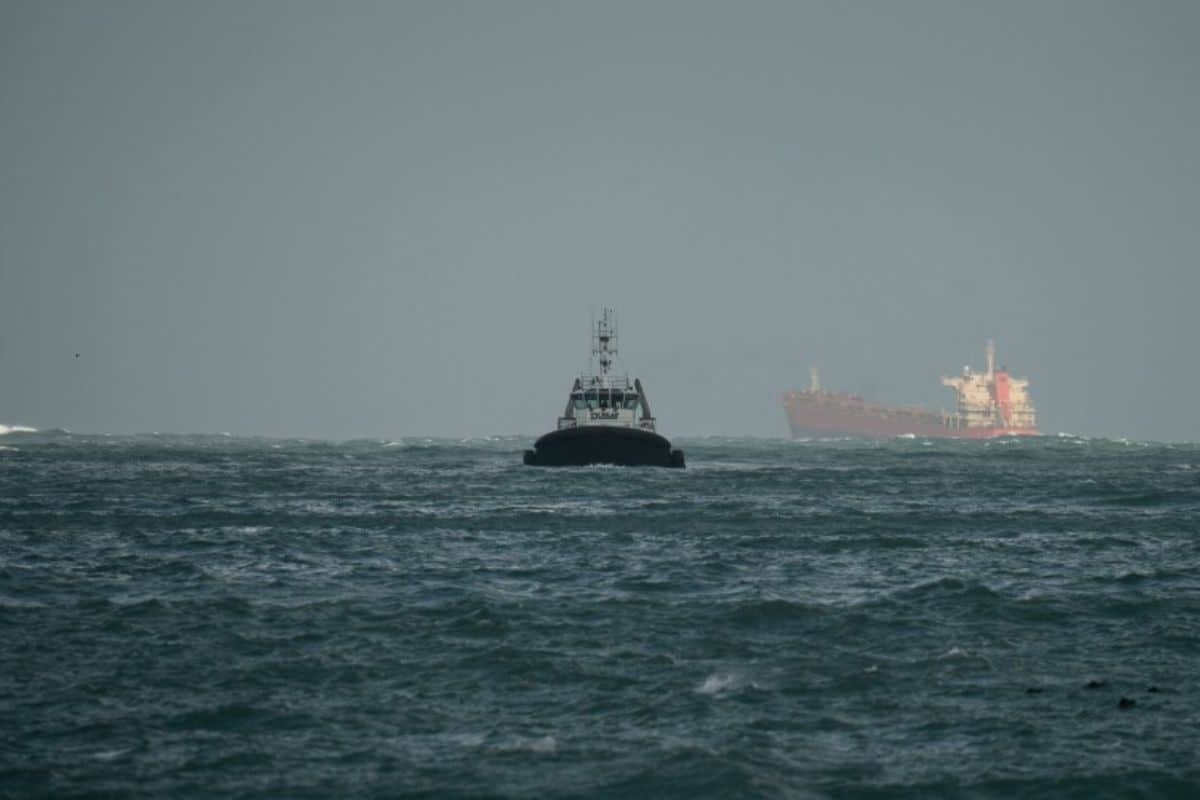Pan Viva Bulk Carrier Battles High Winds in Alaska: Crew Rescued
Pan Viva Faces Danger in Unalaska Waters: Coast Guard on Alert

Bulk Carrier Pan Viva in Trouble Off Unalaska Island
On October 11, the 225-meter-long bulk carrier Pan Viva (IMO: 9453494) ran into serious trouble in Unalaska Bay, Alaska. The ship, carrying 21 crew members, dropped anchor but had trouble staying steady in harsh weather. Strong winds reaching 58 knots (67 miles per hour) and waves as high as 30 feet made it very difficult for the crew to manage the situation. As the bulk carrier faced stability issues, it sent out a distress call for help.
Rescue and Evacuation Efforts
The Pan Viva requested assistance, and a rescue team arrived quickly to help. Four out of the 21 crew members were airlifted off the vessel to safety. However, the weather was too rough for further rescue efforts or towing the ship to safer waters. The authorities placed a tugboat and a coast guard cutter on standby to assist as soon as the weather improves.
Concerns About a Possible Fuel Spill
There is concern that the Pan Viva could drift ashore, which might lead to a dangerous fuel spill. The ship is believed to be carrying a large amount of fuel, posing a potential threat to the surrounding waters and wildlife. Experts have drawn comparisons to the Selendang Ayu incident in 2004, another bulk carrier that met a tragic end near Unalaska.
The Selendang Ayu Disaster: A Painful Reminder
On December 8, 2004, the Selendang Ayu (IMO: 9145528), a 225-meter-long bulk carrier, lost engine power near Unalaska Island. The weather was extremely dangerous, with 60 mph winds and 25-foot waves. As the ship drifted toward land, helicopters were sent to rescue the crew. Sadly, during the rescue, a massive rogue wave hit one of the helicopters, resulting in the death of six crew members.
The Selendang Ayu eventually broke into two pieces, spilling 336,000 gallons of fuel oil into the ocean. The oil spill caused severe harm to the environment, killing thousands of birds and other marine animals. It took until June 2006 to complete the cleanup, showing the long-term impact such accidents can have on nature.
What’s Next for Pan Viva?
Authorities hope to stabilize the Pan Viva and prevent it from running aground. However, the bad weather remains a serious challenge. Until the conditions improve, the tugboat and coast guard will stay ready to act. Officials are working hard to avoid another disaster like the Selendang Ayu fuel spill.
This incident serves as a reminder of the dangers of maritime travel in Alaska’s harsh waters. With rescue operations underway, everyone hopes the Pan Viva will be secured without any loss of life or harm to the environment.
Conclusion
The Pan Viva’s struggle highlights how unpredictable the Alaskan waters can be. As authorities monitor the situation closely, their goal is to avoid the kind of disaster that happened with the Selendang Ayu. The rescue teams are doing their best to help the crew while ensuring the ship does not cause environmental harm.
